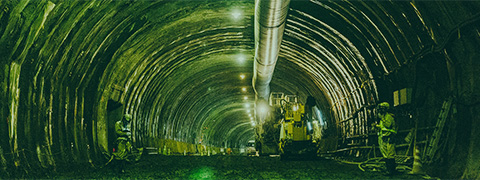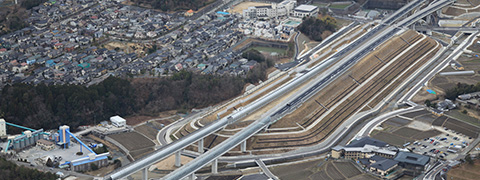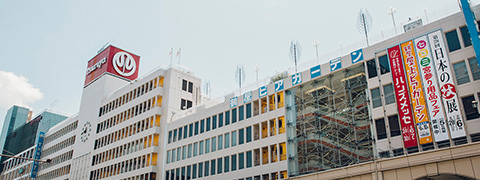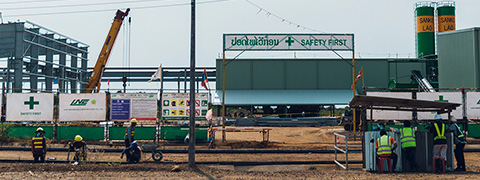
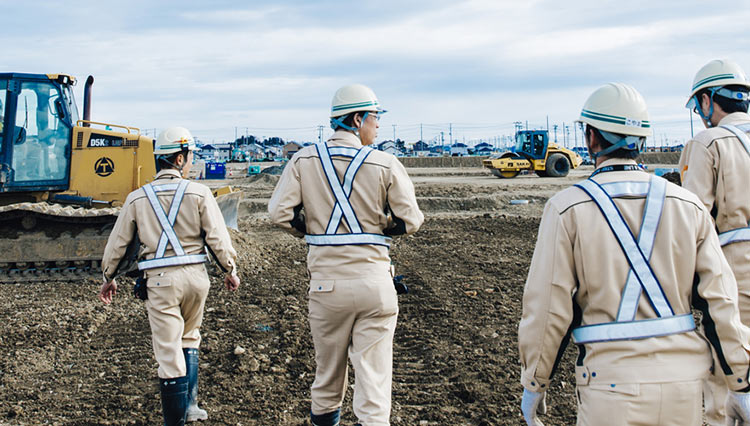
For the Future of Sendai
Overcoming the constraints of labor, materials, and time
Sendai City Arai Nishi Land Readjustment Project
A new urban area is being developed in the Arai Nishi area following the start of service on the new Sendai City Subway line.
This project plays a part in the recovery and reconstruction from the Great East Japan Earthquake, serving as a place to which people affected by the disaster will move and live.
However, this project faces two main challenges. The first is a shortage of workers and materials, while the second is that it must be completed in a short period of time.
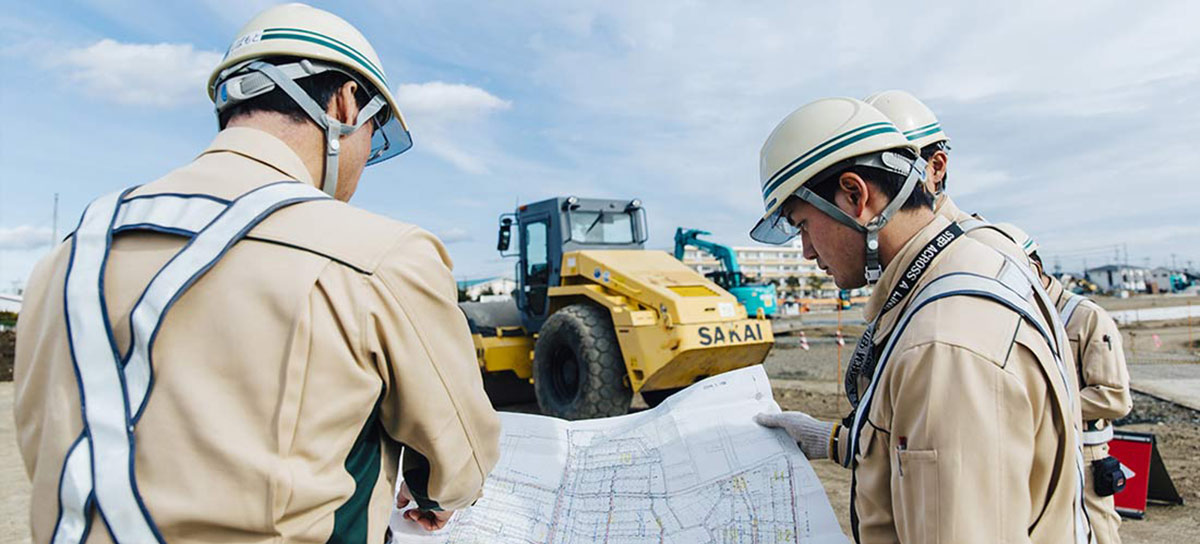
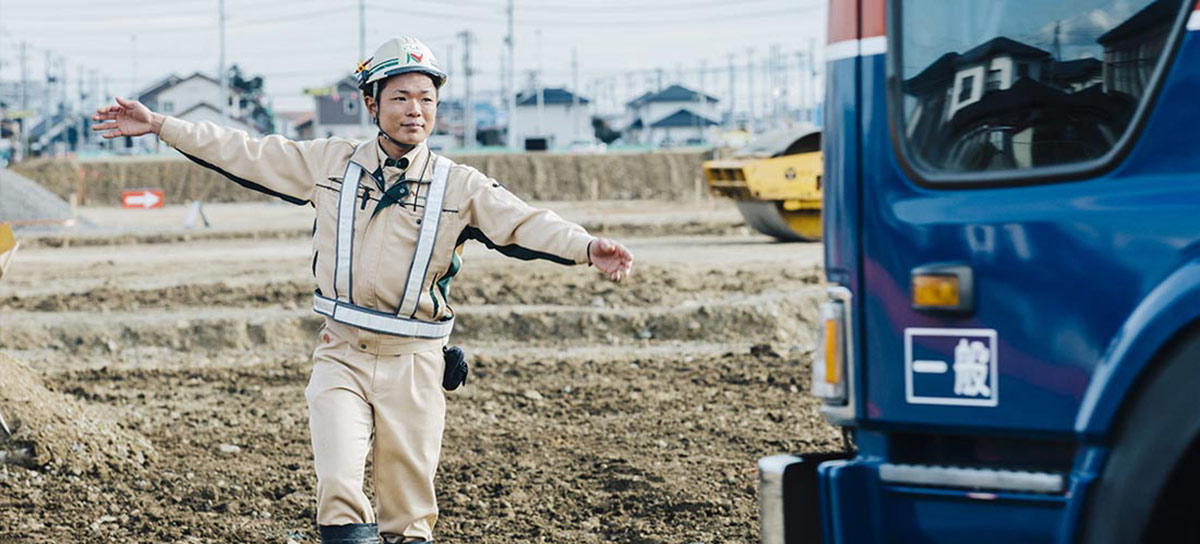
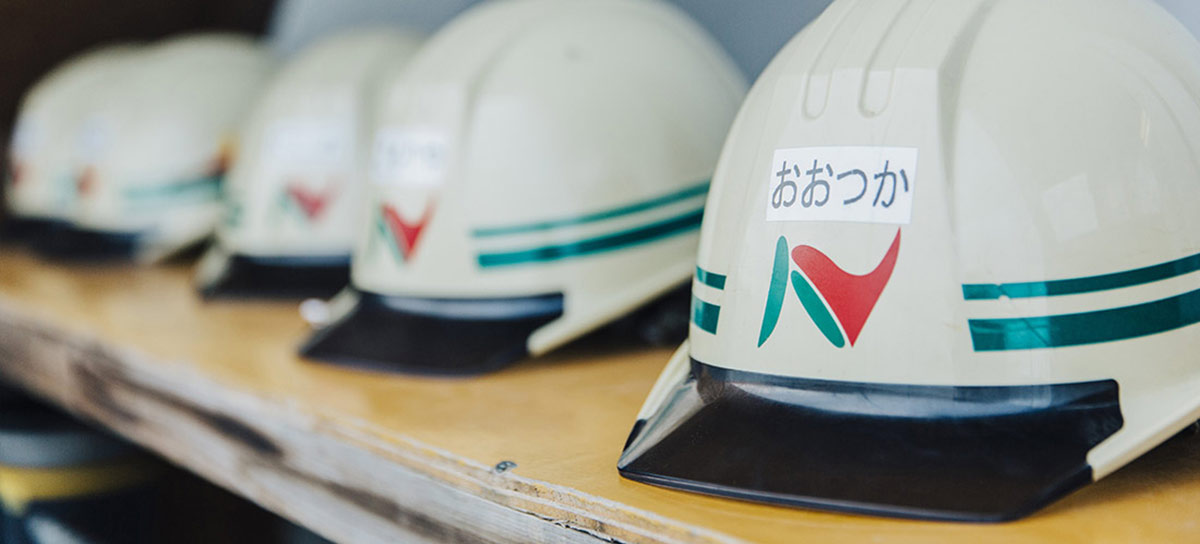
A land readjustment project for the future that plays a part in recovery and reconstruction in the city of Sendai
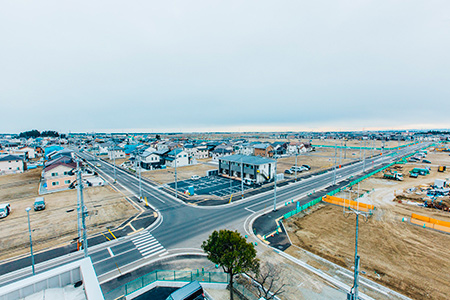
Ever since the Sendai City Subway Tozai Line began service in December 2015, the Arai Nishi district in the city of Sendai has been increasingly urbanized because of its close proximity to Rokuchonome Station. The basic policy of the Sendai City Government defines it as a prospective area for building a functionally concentrated city centering on the axis of public transport. The project aims to construct a good residential district to encourage the use of housing lots and develop the district into a sound urban area. A portion of the land to be readjusted in this project is designated as a disaster prevention area to which victims of the Great East Japan Earthquake will be relocated. In this regard, one of the objectives of this project is to play a role in the recovery and reconstruction of Sendai City. With the largest number of housing land lots for relocation, Sendai City authorities and disaster victims have high hopes for this project. Those involved have been doing everything they can to establish a new community within the short timeframe for this project. We at Nishimatsu Construction undertake urban development with professionalism and pride as engineers. This project not only represents an individual effort of Nishimatsu Construction, but a project that helps to create the future of the region.
Independently identifying problems on site to complete the project ahead of schedule…
The key was to rearrange the construction sequence.
The Sendai City Government requested that construction of the disaster prevention area for group relocation be finished in two years. It was really a challenge. After the earthquake, workers and materials were in short supply. In addition, there were major issues such as the weakness of the ground and the need to construct the sewerage infrastructure. The region has a weak stratum composed primarily of cohesive soil. In the Arai Nishi area, weak cohesive soil, sandy soil, and organic soil combine to form a thick deposit on the surface, which made reinforcing the ground the top priority. The preloading method was employed to move forward with consolidation settlement and solidify the base ground. Mounting to the level of the planned ground and extra mounting in anticipation of a load equal to that of a three-story wooden building (loading mound) were also implemented, and the loading mound was removed after the residual settlement reached the target level. The most significant point of this project was the order of mounding.
Put up for sale in advance, the land lot selected as the disaster prevention area for group relocation is located in the upstream part in the zone. Even when work in part of the area is implemented and complemented earlier than other areas, it will be impossible to let ffoul water must not be allowed to flow from the upstream part if construction of the sewerage infrastructure was not yet finished in the downstream part. The provision of comfortable living conditions involves much more than the completion of housing lots. Before establishing the community in the upstream, the construction of the sewerage infrastructure at the end of the stream must be finished first.
In addition, the establishment of the community requires the construction of all the roads in the area. “Mounding was involved in every place where work was performed. Generally, the order of mounding is designed to minimize the distance of moving earth for cost and efficiency reasons” said Mr. Shibamoto, project manager, as he unfolded the mounding progress plan while explaining the reasons for the elaborate calculation. “However, this kind of approach would not have worked for this project. We felt that we needed to do mounding first where it was needed, even though the transport distance was ultimately longer. This made earth management more difficult and the process more complicated, but we placed a greater priority on mounding at the critical position that was the key to everything. Otherwise, we would have failed to successfully establish the community within the short fixed period of two years.”
The project team gave greater priority to the preloading mound construction in the critical area along the trunk road. Taking advantage of the existing roads and channels allowed for mounding and underground installation work to be performed simultaneously. We determined the order of priority based on what proved to be the best way in light of the entire project. We feel that we managed to overcome the issues the project faced because we did not merely observe the work period, but also imagined what life would be like after people relocated there.
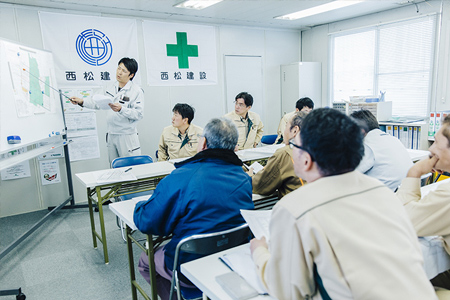
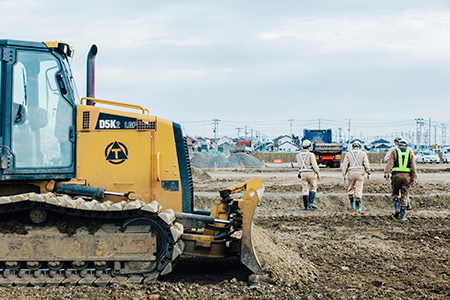
Lending a receptive ear to the requests of local residents…
Taking into account and complying with the wishes of neighbors is the first step towards building safe and secure social infrastructure.
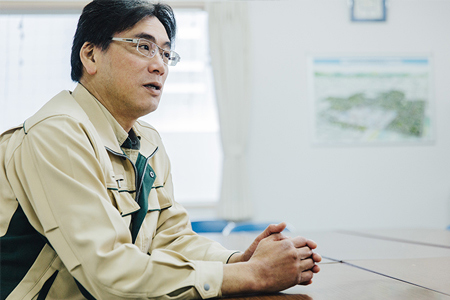
This land readjustment project was a large-scale land development project in a residential district. There were residential buildings on three sides, and an elementary school and a kindergarten next to the area. “A total of 700 large dump trucks went to and from the area. There were times a steady stream of trucks entered the site every 30 seconds, so we anticipated complaints about the traffic safety of preschool and elementary school children and residents, as well as complaints about the noise and shaking. That’s why we made it a point to visit every single house in the neighborhood before work began.” Mr. Shibamoto’’s own rule of thumb was helpful in providing local residents with advance notice. “It wasn’t enough to hold a joint briefing or pass around a circular notice. We attach great importance to the act of meeting every single inhabitant face to face, explaining an outline of the construction. We gave them the office phone number and my mobile phone number for contacting our office or me so that they could call whenever they were bothered by something. That helped us have a person-to-person dialogue and hear their requests and comments. That is something I learned from my past experience. There were different concerns, but we didn’t receive any major complaints at all.”
It is difficult to obtain understanding and cooperation from local residents by unilaterally giving explanations. Building a solid relationship of meeting them face to face and exchanging opinions is the first step towards constructing social infrastructure that pleases them.
Taking into account the entire project, not just the work
“Normally it takes around three years to complete a project of this scale, but we succeeded in finishing the disaster prevention area for group relocation 25 months after the start of construction. This success stemmed from our ability to procure labor and materials early on and ensure the swift start to construction,” explains Mr. Shibamoto. He visited every single local cooperative contractor to get everybody on the same page. A temporary enclosure was erected about 10 days after the contract was signed, and earth began to be carried in one month after that. “When the project was started, we were still not finished with all the designs and plans, even though we needed to successfully establish the community in two years. We piled up the earth during the first year of work, and considered what needed to be done as we watched progress being made on the construction site. There was a limited amount of time, and we wouldn’t have been able to make any progress without taking action. However, we had a contract for this project, so it would have been inappropriate if we had only thought about the construction. Things would not have worked out well if we had failed to put a priority on completing the entire project free of trouble. The expected outcome was not merely to complete the work, but to finish the land readjustment project itself.” This perspective was the source of our hands-on capabilities in this project.
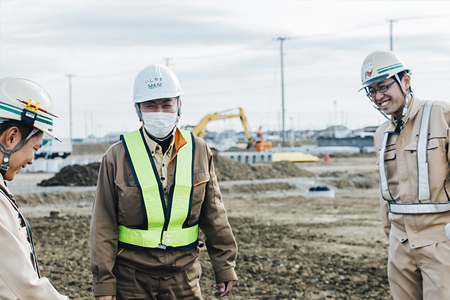
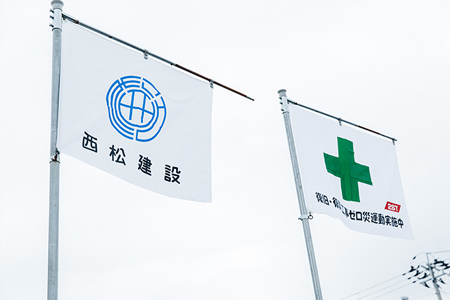
“The project helped victims move out of the temporary housing early on. As is the case with any site, we do not feel satisfied when the work is done. Rather, it is only when people begin living there that we truly feel happy.” We may realize that our work has contributed to people’s lives when people bring life to their community.
Overall capability that anticipates the future instead of focusing on a single factor
We engage in urban development while incorporating opinions from the Sendai City Government and inhabitants into the project, seeking to build a community in which newcomers to the disaster prevention area for group relocation find it easy to live. Nishimatsu Construction worked with great speed to complete the project and satisfy the request from the Sendai City Government, which asked for the land set aside to be transformed into residential land lots and supplied by March 2015. For this particular site, the preloading method was implemented. This undertaking called for the management of a large volume of earth. The earth was used at different places to control consumption and limit the amount of waste that was generated. In addition, the land was developed into residential land lots in less time than is usually needed. I really appreciate the effort that was put forth, not only in managing the quality but also thoroughly managing costs at the same time.
The greatest difficulty in land readjustment is the cooperation of land owners. Nishimatsu’s personnel addressed this challenge by predicting possible issues. It would not have been possible to carry out the project without approaching the land owners and gaining their trust, speaking with them and providing them with an overview of the project, which was to acquire their land and return it in form of marketable housing lots. There was a need for skill to produce high quality commercial items that lived up to the trust of the land owners while maintaining it, and for a capacity to respond with sincerity.
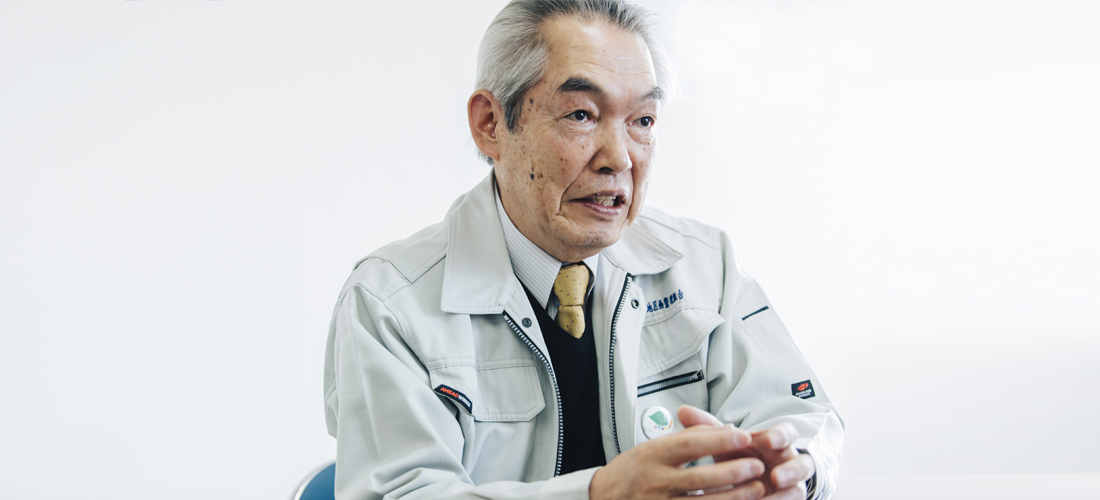
I feel that Nishimatsu Construction was successful because it capitalized on its past experience, pooled together the know-how and expertise within its organization, and anticipated every single issue. This is not the result of any one outstanding thing, but the steady accumulation of efforts. I really admire Nishimatsu’s overall capabilities. The Sendai City Government was very happy that the land was delivered within the short work period. I have heard from some who are already living there that they feel these lots are great places to live. I believe the community will be made even better if commercial districts are built following the completion of the land readjustment project.
Takashi Abe
Head of the Administrative Office, the Association for the Sendai City Arai Nishi Land Readjestment Project






